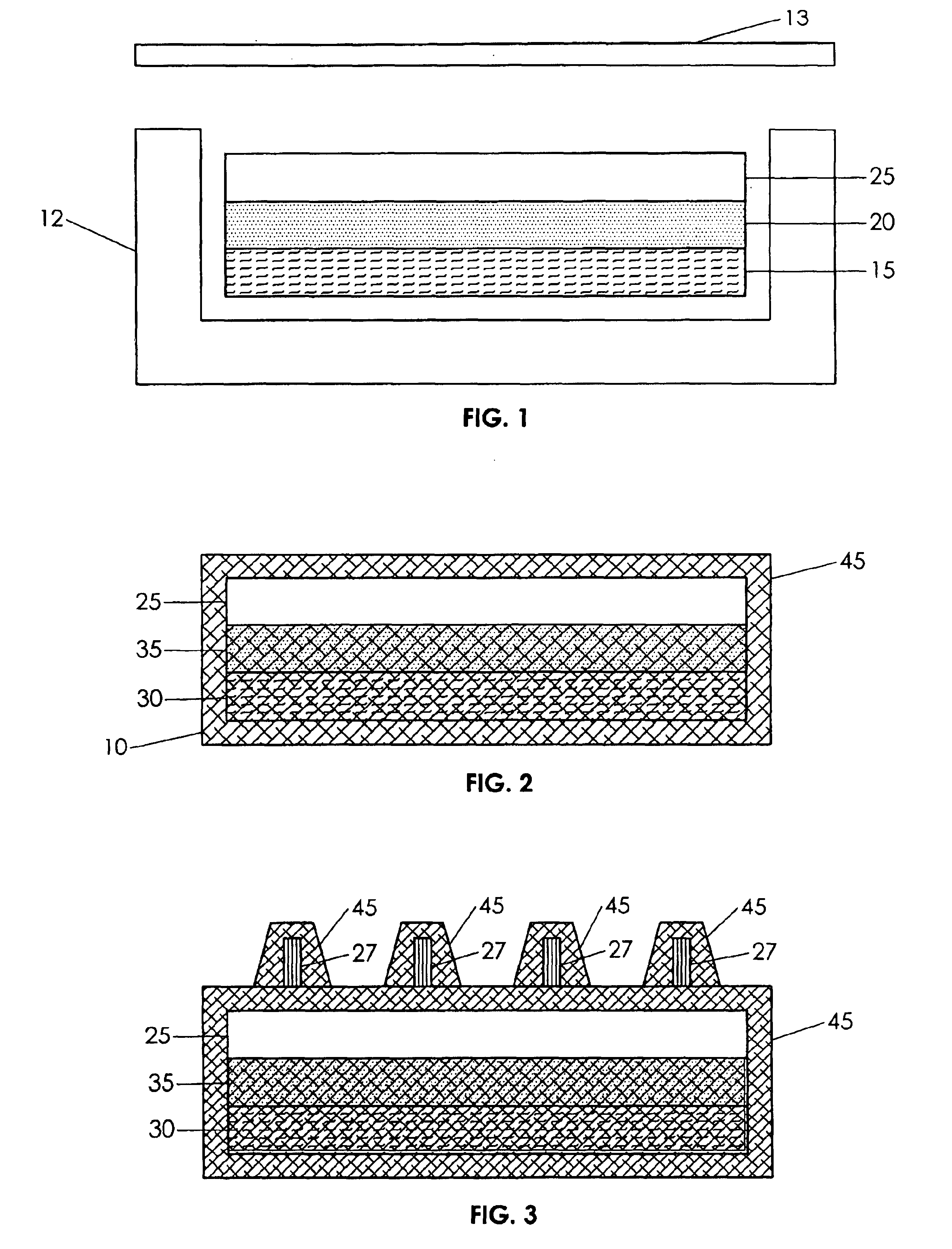Multi-structure metal matrix composite armor and method of making the same
a composite armor and metal matrix technology, applied in the field of light weight armor systems, can solve the problems of difficult implementation of the powder metallurgy process used to form the graded composite layers in the field of composite armor, and the difficulty of creating a multi-layered material structure, etc., and achieve the effect of increasing the effectiveness of the armor system
- Summary
- Abstract
- Description
- Claims
- Application Information
AI Technical Summary
Benefits of technology
Problems solved by technology
Method used
Image
Examples
Embodiment Construction
[0012]A lightweight armor system 10 according to the present invention is best seen in FIGS. 1 through 5 and may comprise a multi-layer combination of hard or dense substances and ductile components. FIG. 1 illustrates a “layup” or combination of reinforcing constituents. The reinforcement comprises a microstructure designed to have a predetermined fraction of void volume or open structure that is to be subsequently filled with molten metal. The shape of the “layup” is determined by the dimensions of the casting cavity 12 used to create a single integrated solid structure. The layered materials 15,20, and 25 would be set into a casting mold in an amount necessary to conform to the shape of the mold. In one embodiment the “layup” may include a combination of reinforcement material layers such as a reinforcement layer 15 of carbon fiber, at a volume of 20% or more, a reinforcement layer 20 of silicon carbide preform, at a 20% or more volume, and a hard layer 25 of dense ceramic such a...
PUM
| Property | Measurement | Unit |
|---|---|---|
| Fraction | aaaaa | aaaaa |
| Structure | aaaaa | aaaaa |
| Density | aaaaa | aaaaa |
Abstract
Description
Claims
Application Information
 Login to View More
Login to View More - R&D
- Intellectual Property
- Life Sciences
- Materials
- Tech Scout
- Unparalleled Data Quality
- Higher Quality Content
- 60% Fewer Hallucinations
Browse by: Latest US Patents, China's latest patents, Technical Efficacy Thesaurus, Application Domain, Technology Topic, Popular Technical Reports.
© 2025 PatSnap. All rights reserved.Legal|Privacy policy|Modern Slavery Act Transparency Statement|Sitemap|About US| Contact US: help@patsnap.com



